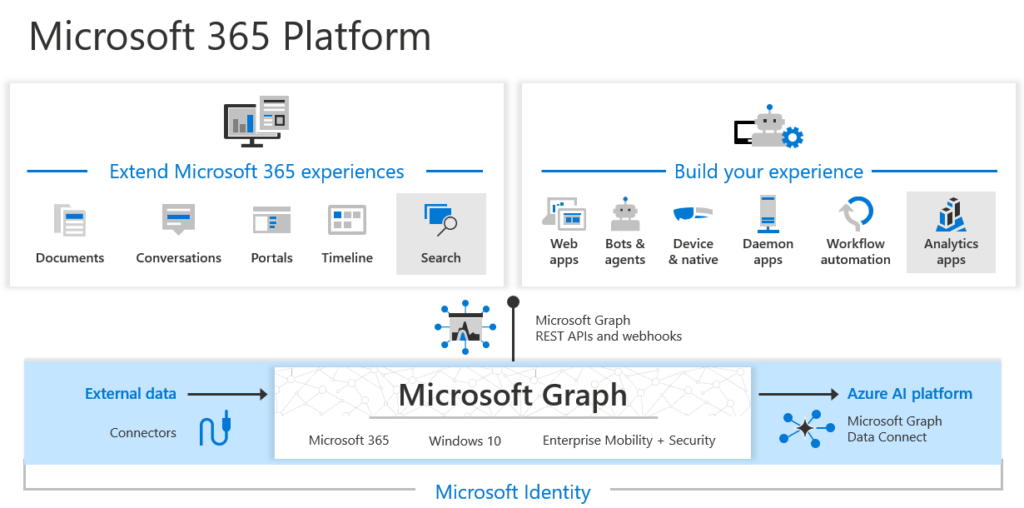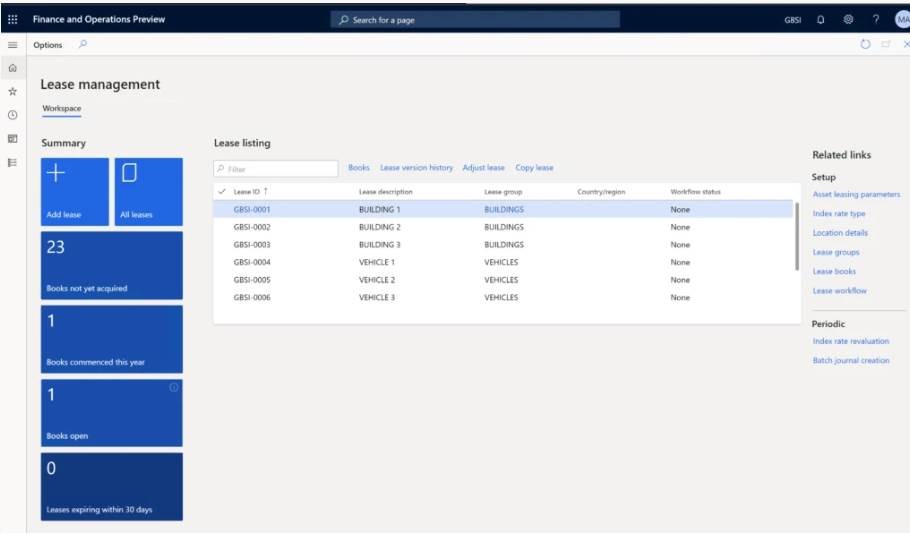Microsoft 365 Copilot combines the power of large language models (LLMs) with your data in the Microsoft Graph and the Microsoft 365 apps to turn your words into the most powerful productivity tool on the planet.
Microsoft Graph is the gateway to data and intelligence in Microsoft 365. It provides a unified programmability model to access the tremendous amount of data in Microsoft 365, Windows, and Enterprise Mobility + Security. Use the wealth of data in Microsoft Graph to build apps for organizations and consumers that interact with millions of users. Custom applications can use the Microsoft Graph API to connect to data and use it in custom applications to enhance organizational productivity.
Microsoft Graph provides a single endpoint that the app can use to access the required data and to simplify the overall development process.
Organizations store vast amounts of data and intelligence across Microsoft cloud services, but how accessible is the data to users?
For example, a salesperson is setting up a meeting with a customer, wants to easily access files and previous meetings and notes but are those emails and chats between a salesperson and customer easy to find? What people within the organization can the customer contact for support?
Data and intelligence like the following types can be accessed through the Microsoft Graph REST APIs and client libraries:
- Users and groups
- Teams data
- Tasks
- Files
- Meetings and calendars
- Organizational charts

Copilot is an AI-powered tool that uses natural language processing and machine learning to understand users’ requests and provide personalized recommendations, tips, and assistance. Users can ask Copilot questions and get instant answers, guidance, and suggestions to help them work more efficiently.
Copilot is designed to be available across multiple Microsoft 365 applications, including :Word, Excel, PowerPoint, Teams and Outlook, and is intended to be context-aware. It ‘understands’ the user’s specific needs and the task at hand. Some examples of this functionality are the ability to point copilot to a word document, and request to create a power point presentation based on the data in the document.

Copilot will also work with tools from the Power Platform and Dynamics 365 products. Copilot for Power Virtual Agents is already in preview.

Copilot enables marketers to create targeted customer experiences and interactions that are informed by data-driven decision making. With access to the natural language data discovery feature in Customer Insights, they can build confidence by validating and discovering customer insights for their marketing strategies. For example, a marketer can ask Copilot how many of their customers fit the profile of currently residing in Washington, DC, who are over the age of 25, who have also attended a promotional event in the last six months.
With just a few clicks, Copilot will present the results of their query, including the number of customers that match the attributes or behaviors, as well as other useful information such as the customer lifetime value, product preferences, or average purchase price.
Copilot in Dynamics 365 Customer Insights removes the barrier of needing to craft queries in SQL to get a deeper understanding of customers, enabling marketers to speed and scale the delivery of hyper-personalized experiences that customers expect.
Copilot in Viva Sales
Automatically generate contextual email replies and meeting summaries with Copilot in Viva Sales, available to Dynamics 365 Sales customers. Copilot in Microsoft Dynamics 365 Sales and Viva Sales helps sellers dramatically reduce the time they spend on clerical tasks. AI helps write email responses to customers and can even create an email summary of a Teams meeting in Outlook. The meeting summary pulls in details from the seller’s CRM such as product and pricing information, as well as insights from the recorded Teams call. With sellers spending as much as 66% of their day checking and responding to emails, this presents a significant business upside to give the seller more time with their customers.
. For example, with Viva Sales, Copilot can learn how to connect to CRM systems of record to pull customer data — like interaction and order histories — into communications. As Copilot learns about new domains and processes, it will be able to perform even more sophisticated tasks and queries.

Copilot in Microsoft Viva Goals simplifies goal setting by guiding leaders through the process of creating objectives and key results (OKRs) as well as simplifying goal management across the organization. Copilot can suggest draft OKR recommendations based on existing Word documents, such as an annual business plan or a product strategy paper. Once created, Copilot saves employees time by summarizing the status of OKRs, identifying blockers, and suggesting next steps. Lastly, Copilot can consolidate existing data to generate more comprehensive check-ins so teams can leverage a breadth of knowledge across different sources of truth.

An entirely new experience is Business Chat that works across he Microsoft 365 apps, and your data — your calendar, emails, chats, documents, meetings and contacts — to do things you’ve never been able to do before. You can give it natural language prompts like “Tell my team how we updated the product strategy,” and it will generate a status update based on the morning’s meetings, emails and chat threads.
You will be able to access Business Chat from Microsoft 365.com, from Bing when you’re signed in with your work account, or from Teams.
Copilot will fundamentally change how people work with AI and how AI works with people. As with any new pattern of work, there’s a learning curve — but those who embrace this new way of working will quickly gain an edge. Copilot is integrated into Microsoft 365 and automatically inherits all your company’s valuable security, compliance, and privacy policies and processes. Two-factor authentication, compliance boundaries, privacy protections, and more make Copilot the AI solution you can trust.
I have only scratched the surface – Teams swept the business world during COVID now Co-Pilot and VIVA integrated across your favourite apps erps and crm systems – we often read about game changing software and paradigm shifts- but this times it’s for real and faster than we realise.




